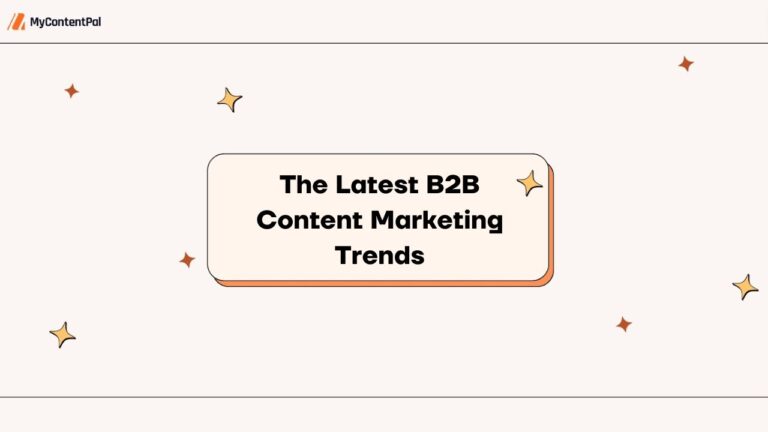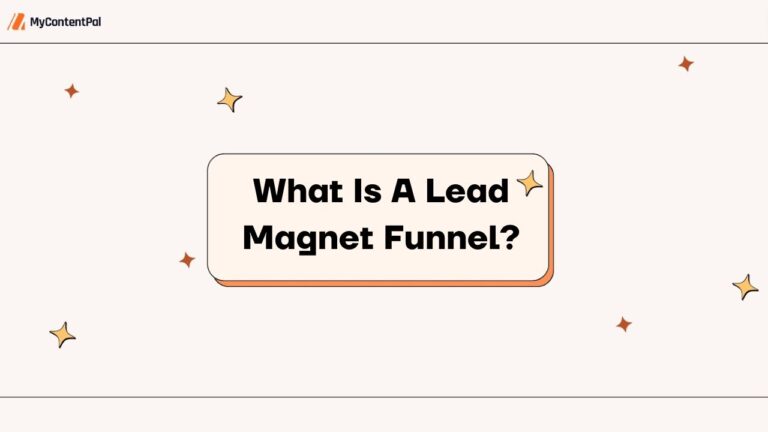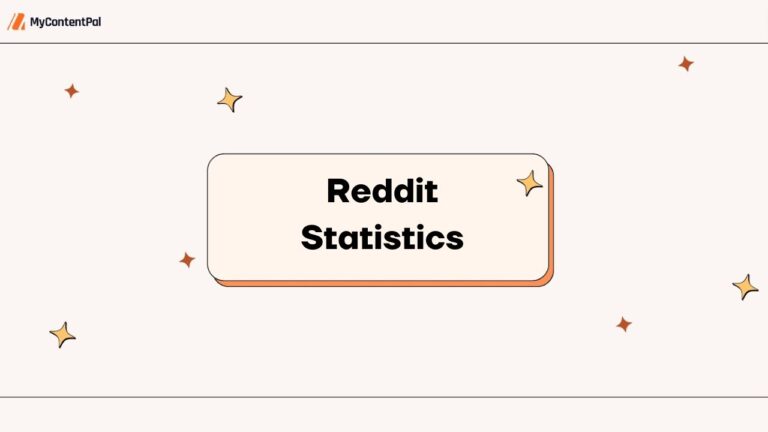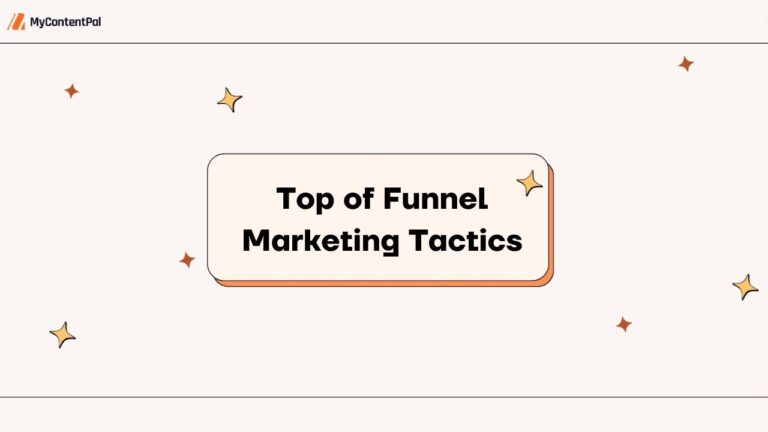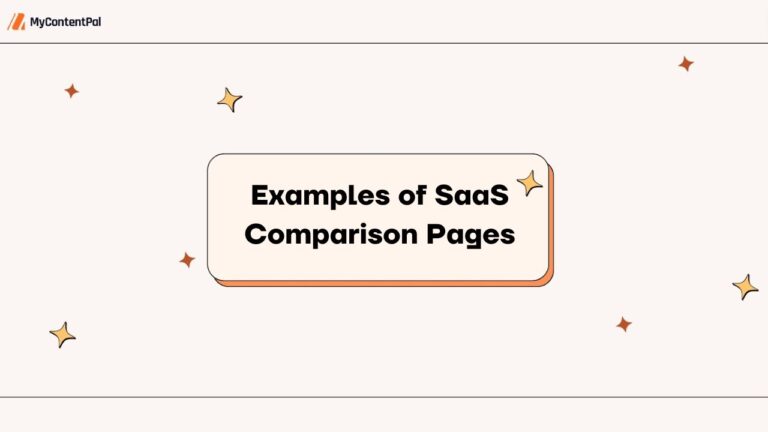Tired of losing leads at the final hurdle? Well, you might not want to hear this but if it keeps happening, your bottom-of-funnel marketing strategy is likely to blame.
But don’t despair. There are plenty of things you can do differently to get those leads to convert.
I’m going to guide you through 7 of the best types of bottom-of-funnel marketing content that will convince prospects to choose your brand. This includes creating product demo videos, posting interactive pricing guides, crafting comparison content, and much more.
I’ll also tell you about the key best practices and let you in on an alternative to targeting keywords.
What Is The Goal Of Bottom-Of-Funnel Marketing?
Image by Mohamed Hassan from Pixabay
Once users reach the bottom of the marketing funnel (or sales funnel), they’re almost ready to convert. So, the goal of bottom-of-funnel marketing strategies is to give the user that final nudge and convince them to choose your business.
Put simply, you want to convert your leads into paying customers.
This means you can’t use the same tactics you’d use for potential customers in the middle or top of the marketing funnel.
Why? Because these users are still researching their problems and the solutions. They might still be quite far away from making a purchase decision.
When users are at the bottom of the funnel, they’ve researched their pain points, they know how they can solve them, and they know a bit about your brand. Now, they need to be assured that you’re the best business to help them solve the problem.
With bottom-of-funnel marketing, your job is to convince them.
7 Effective Content Types For BoFu Marketing
Image by Mudassar Iqbal from Pixabay.
OK, how do you go about turning potential customers into paying ones? Well, I’m going to get into that in detail shortly.
But first, I need to give you a vital piece of advice. Whatever type of BoFu content you create, focus on the benefits your product/service can provide to the customer, rather than your accolades.
Remember, bottom-of-funnel marketing isn’t about you, it’s about the customer.
With that in mind, let’s take a look at the best types of BoFu content.
1. Testimonials
Testimonials from satisfied customers act as social proof to potential customers who may still be sceptical. If a prospect reads a positive testimonial from a customer with similar pain points, it reassures them and helps to foster trust in your brand.
Testimonials also:
- Demonstrate real-world value: They showcase the tangible benefits your product/service has provided to paying customers, instead of just listing features.
- Address specific concerns: They demonstrate how existing customers have used your product/service to overcome specific concerns that potential customers also have. This directly addresses common objections and pain points.
Typically, testimonials are posted on your site where they can be easily found by bottom-of-the-funnel prospects. Here’s an example from HubSpot:
Image link: https://www.hubspot.com/customer-reviews
2. Case studies
Case studies are another effective lower-funnel marketing tactic. They provide clear examples of cases where your brand has helped a customer to achieve a specific outcome.
Essentially, you’re showing a potential customer what their own journey with you might look like.
Case studies allow your leads to read about the experiences of customers in the same industries, roles, and situations as them. This helps to convince them that your product/service is right for them too.
The bulk of your case studies will be made up of text guiding the reader through the customer’s success story. But, make sure you include customised images and infographics throughout to make the study more engaging.
Here’s an example from a Mailchimp testimonial about how they helped a Brazilian shoe brand achieve growth:
Image link: https://mailchimp.com/case-studies/yuool-customer-success-manager/
3. Personalised emails
One of the key aims of bottom-of-funnel marketing is to establish a connection with potential customers and make them feel valued. That’s why personalised email campaigns can be such an effective BoFu tactic.
To create personalised emails, you can use data that include:
- Customer demographics,
- Browsing behaviour,
- Previous interactions with your content.
Then, you can craft email content that speaks directly to a prospect’s objections, needs, and pain points.
Personalised email marketing provides prospects with highly relevant content that builds rapport and trust. It’s also been shown that prospects are more likely to open your emails, engage with them, and convert if they’re personalised.
4. Pricing guides
One of the biggest remaining objections bottom-of-the-funnel prospects have is the price of your product/service. So, it’s essential your BoFu content addresses this concern.
A great way to do this is to create pricing guides. It’s a proactive way to increase transparency around your pricing and remove uncertainty about the costs of what you provide.
Pricing guides are also one of the most effective bottom-of-funnel marketing tactics for:
- Reducing friction in the buying journey: Sometimes, all it takes to derail a purchase is a prospect having to request pricing details. If you present them upfront in a pricing guide, it removes a potential stumbling block on the road to conversion.
- Qualifying leads: Creating pricing guides is a good way to filter out unqualified leads who can’t afford your product/service. Let’s face it, you don’t want to waste sales time on unqualified prospects.
- Reinforces value proposition: Pricing guides aren’t just a list of prices. They also illustrate the benefits, features, and value customers get with each pricing tier or package. This is exactly what prospects want to know when they’re weighing up their options.
Clearly, pricing guides are an effective bottom-of-funnel marketing tactic, but I want to give you a bit of advice here.
Static pricing guides are becoming outdated. They still have their place for now, but it’s wise to start thinking about how you can create more engaging pricing guides that become true content assets. This could include:
- Interactive ROI calculators highlighting the potential value of your product/service
- Product builders so prospects can create customised solutions
- Gamified free trials and demos that stay top-of-mind for potential customers
5. Comparison content
Prospects at the bottom of the funnel are still trying to decide between your product/service and your competitors’.
To convince them to choose you, you’ll need to create unbiased and detailed comparison content that provides a side-by-side analysis of you and your competitors.
The issue with comparison content is that the keywords you’d be tempted to target are incredibly competitive.
Example:
Let’s say you’re a SaaS company selling email marketing software. You’re probably going to consider creating comparison content that targets the keyword “best email marketing software”, right?
Well, to be honest, unless you’re a very high-authority site, you’re almost certainly not going to be able to rank for that keyword.
This is because you’re going to be competing with huge players like HubSpot, ActiveCampaign, and GetResponse.
Instead, you should target keywords with qualifiers like “best email marketing software for realtors”.
You can then create comparison content that positions you as the best email marketing tool for realtors while positioning your competitors as the best tool for other use cases. For inspiration, check out these SaaS comparison page examples to see how top companies effectively position their products against competitors.
6. Product or service videos
Videos are one of the most powerful bottom-of-funnel marketing tactics. They help you to provide detailed demonstrations of your product/service, increase purchase confidence, and make prospects more likely to convert.
At this stage of the marketing funnel, there are several different types of videos you can use:
Demo videos
Bottom-of-the-funnel prospects want to see exactly how your product/service works. Demo videos are the best way of doing this.
For example, let’s say you’re selling a project management app aimed at marketing agencies. Here’s how you could create a demo video that turns prospects into paying customers:
- Your narrator details the common pain points marketing agencies face, like siloed communication between team members.
- You introduce your software as a project management solution specifically designed for marketing agencies.
- Using screen recording software, you showcase the many features. For instance, you go through the process of creating a campaign dashboard with tasks for content creation and social media posts.
- Next, you highlight the benefits of these features and how they address different pain points.
- You end the video with a clear call to action. This could be signing up for a free trial of the software.
Testimonial and case study videos
I already covered why testimonials and case studies are such good bottom-of-funnel marketing tactics. However, you can make them even more effective by turning them into videos.
When potential customers can see and hear real people talking about their experiences with your brand, it creates an emotional connection. It also lends the testimonials a sense of authenticity that text can sometimes lack.
Plus, let’s be honest, static text doesn’t tend to be massively engaging. Testimonial and case study videos give you the opportunity to leverage sound, sight, and motion to engage prospects and showcase some of your satisfied customers.
7. User-generated social proof
In a sense, user-generated social proof is a way of letting your customers do your bottom-of-funnel marketing for you. But what is it?
Well, it’s a combination of two powerful digital marketing forces: user-generated content (UGC) and social proof.
- UGC: Refers to any content users create that relates to your product, service, or brand. This includes social media posts with branded hashtags, unboxing videos of your products, and blog posts about experiences of using your service.
- Social proof: In digital marketing, this refers to the fact users are more likely to trust a product/service if they see other people using it.
Essentially, when customers create content about your product/service, it gives it more value in the eyes of your prospects.
Sounds good, right? But how are you supposed to get your customers to do this?
Here are some bottom-of-funnel marketing strategies you can use:
- Giveaways: Promote giveaways that incentivise customers to create content that shows them using your product/service. This could include discounts or free products.
- Branded hashtags: Make it easy for users to share content related to your brand by creating a unique hashtag.
- Showcase existing UGC: Repost UGC on your social media platforms and site. This gives users validation and may encourage others to do the same.
- Engage and respond: Engage with UGC by liking and commenting on the posts. This shows appreciation and that you value their feedback.
Overall, UGC can reduce risk perception, build trust in your brand, and even create a sense of FOMO among your prospects.
An Alternative To Targeting Bottom-Of-The-Funnel Keywords
Image by Megan Rexazin Conde from Pixabay.
Usually, bottom-of-funnel marketing strategies focus on targeting keywords that are:
- Transactional,
- Brand-specific,
- Comparison-oriented,
- And urgency-driven.
For example, keywords like “buy now”, “free trials”, and “Apple vs Android”.
However, this can trap you in a narrow space where you’re competing with everyone else for the same keywords. It’s also hard to find new ways to write about topics that have been covered over and over again.
I’m going to suggest an alternative approach.
It involves sourcing topics directly from prospects who are already at the bottom of your marketing funnel. The idea is to see which topics, objections, and pain points are consistently raised by prospects during sales calls with your business. Then, you can create content around these topics
This content should be fed to your sales team so that they can address these concerns during sales calls with leads. As a result, it makes it more likely for these prospects to convert.
This is a different bottom-of-funnel marketing approach to the traditional tactic of driving traffic and converting it into sales.
It can be tricky to get right because you need to be able to identify patterns within your sales calls. Of course, this means sales and marketing need to be working hand-in-hand. However, if you can get it right, it can ease your reliance on organic traffic and boost your conversions.
Best Practices For Creating Bottom-Of-Funnel Marketing Content
Image by Memed_Nurrohmad from Pixabay.
Bottom-of-funnel marketing isn’t easy. At the end of the day, getting prospects to become paying customers is the final and often trickiest hurdle. However, at this late stage of the marketing funnel, there are some best practices you can follow to give yourself the best chance of converting leads.
Regularly update your bottom-of-the-funnel content
Updating your bottom-of-the-funnel content is essential. Think about it, BoFu content relies heavily on real-world examples, data, pricing comparisons, and other information that becomes outdated quickly.
If you don’t regularly check and update it, your BoFu content could be full of inaccuracies. Imagine guiding a prospect all the way to the bottom of the marketing funnel only to lose them because your content has become obsolete.
As a general rule, you should update your BoFu content every quarter. For content that’s particularly reliant on data, try to update it once a month.
Use compelling calls-to-action (CTAs)
In a way, CTAs are the lifeblood of bottom-of-funnel marketing. They’re the final piece of the puzzle that convinces potential customers to convert.
This means they need to be clear and compelling. They should also relate directly to the action you want the user to take. Here’s an example:
“Ready to unleash your marketing potential and get the jump on your competitors? Sign up for Moonshine’s newsletter to get the latest digital marketing news and tips delivered straight to your inbox.”
Create a sense of urgency and scarcity
At the bottom of the funnel, you want potential customers to feel like they need to convert quickly. The aim is to shorten the buyer window and start counting those conversions.
A great way to do this is to foster a sense of urgency and scarcity among your prospects. Here are some ways to go about it:
- Promote limited-time discounts
- Use countdown timers
- Offer time-sensitive bonuses
- Highlight limited supply
- Announce upcoming price increases
Utilise multi-channel bottom-of-funnel marketing
Your prospects don’t reach the bottom of the marketing funnel by blogs alone. These days, they find BoFu content in many different places.
For instance, a lead might see some BoFu UGC on TikTok, watch a BoFu YouTube video, and then follow a link to your BoFu comparison article before converting.
This means you need to distribute your BoFu content across all the channels where your audience is active, such as:
- YouTube and other video channels
- Your site
- Your blog
- Other brand’s blogs
- Social media platforms (including collaborations with other brands and influencers)
- Paid ad channels
Final Thoughts
By following these bottom-of-funnel marketing tactics, you can create a winning strategy that convinces hesitant leads to convert.
Remember to produce as many types of BoFu content as possible so that you can take a multi-channel approach. Promote the benefits of your product/service and show prospects how it can help them to solve a specific pain point.
If you do all this while also using compelling CTAs, creating a sense of urgency, and regularly updating your content, you’ll be able to master the final stage of the marketing funnel.
FAQs
How can I tell if my bottom-of-the-funnel strategy is working?
Hopefully, you’ll be able to tell your bottom-of-funnel marketing strategy is working because you’ll be generating loads of sales. However, there are several other metrics you can track to evaluate your progress, such as:
- Return on investment (ROI)
- Conversion rate
- Cost per acquisition (CPA)
- Customer Lifetime Value (CLV)
- Churn rate
Are paid ads effective at the bottom of the marketing funnel?
Yes, paid ads can be an effective way to target prospects at the bottom of the marketing funnel. In particular, retargeting ads can be used to reach users who have already interacted with your brand.
You can also use them to create a sense of urgency by advertising things like limited-time offers and free trials, and they can be used across multiple channels.
How long should bottom-of-the-funnel YouTube videos be?
Bottom-of-funnel marketing videos should usually be longer than videos at the top of the marketing funnel. Yet, the ideal length depends on the type of video.
As a general rule, demo videos should be around 20 to 30 minutes long. This gives you enough time to give potential customers specific information without them becoming disengaged.
For customer testimonial videos, the ideal length is around 2 to 5 minutes.
